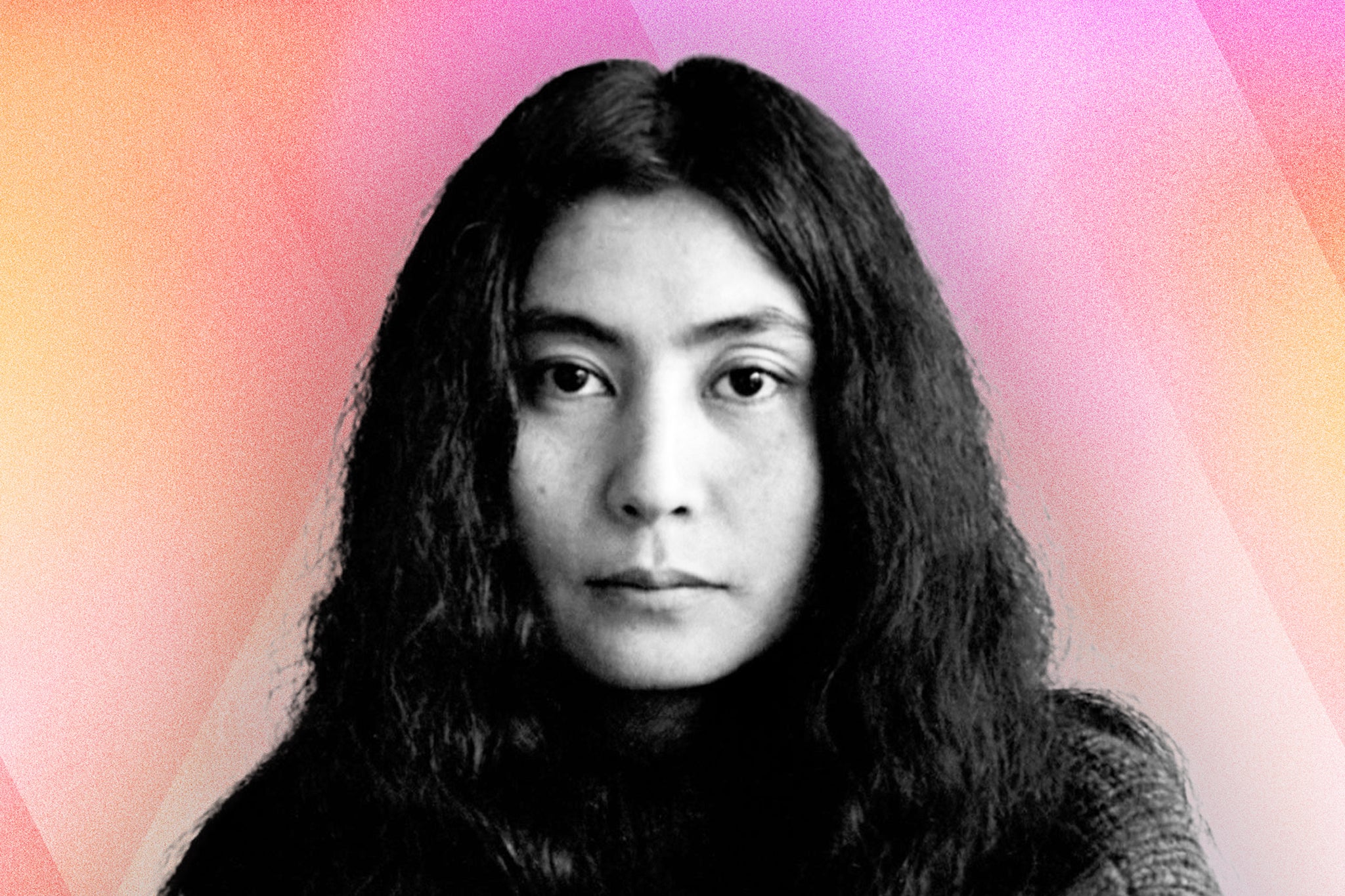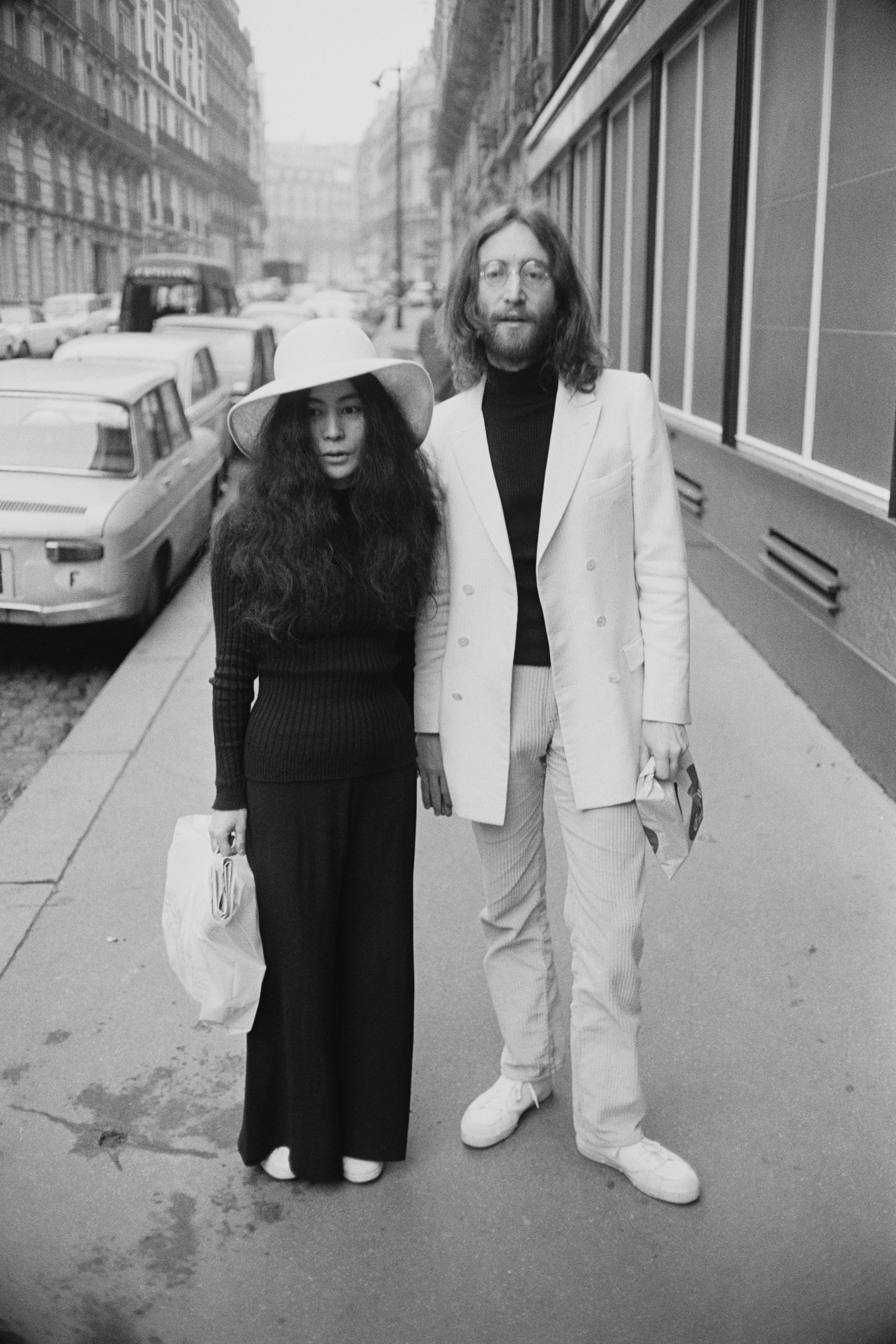Yoko Ono: the woman who broke up The Beatles or great feminist artist?
Few cultural figures are so polarising as Yoko Ono, who has been mocked as a hanger-on and dismissed as charlatan since her notorious marriage to John Lennon. As a major new exhibition of her work opens at Tate Modern, Katie Rosseinsky asks if she’s due a reappraisal


Misunderstood genius or pretentious charlatan? Revolutionary artist or (frankly terrible) singer? Almost six decades after she became globally (in)famous, it’s still hard to find a cultural figure more polarising than 90-year-old Yoko Ono. Her relationship with John Lennon is cited as the blueprint of the meddling girlfriend, ruining her partner’s (superior) art, her work often derided and used as a punchline: no one really wants to hear themselves described as “a bit of a Yoko”.
But Peter Jackson’s seven-hour Beatles documentary Get Back, released in 2021, started to unpick the myths surrounding Ono and the break-up of the world’s biggest band. Yes, she’s practically omnipresent as The Beatles are at work, but she hardly seems like an obstacle to their creative process; most of the time she’s knitting or reading the newspaper. Now a new exhibition at Tate Modern, the UK’s largest ever showcase of Ono’s work, will further challenge what we think we know about her when it opens this month. It’s all part of an overdue reappraisal, forcing us to ask: how much do we really know about Yoko Ono? And is it time we started taking her work seriously?
Born in 1933, Ono had a privileged upbringing. Both her parents’ families had made their fortunes in banking, and her father’s high-flying job meant that Yoko spent her childhood between Japan and America, observing both cultures as if from a distance. In the aftermath of the devastating air raid on Tokyo in 1945, food was scarce for everyone, and the Onos found themselves trading heirlooms for something to eat. Yoko would later pinpoint this as the awakening of her artistic imagination. Aged 12, she would try to distract her younger brother Keisuke from his hunger by helping him dream up a fantasy menu. “So we had our conceptual dinner and this [was] maybe my first piece of art,” she told The Guardian.
She channelled that early creativity while studying at Sarah Lawrence, the progressive liberal arts college in New York, laying the foundations of her unique brand of multi-disciplinary art. Often spotted scribbling in an apple tree, Ono started to write her first “instruction pieces”, brief, poetic directions telling the reader to create their own art, either literally or using their imagination. She’d eventually compile over 150 of these pieces in Grapefruit, her 1964 book. Music was another source of solace: Ono had been classically trained in piano and opera, but found herself developing more avant-garde tastes. A teacher pointed her in the direction of John Cage, the radical composer at the forefront of New York’s experimental music scene. He’d soon become a frequent collaborator, and part of Ono’s social circle: in 1956, Ono married the pianist Toshi Ichiyanagi, one of Cage’s proteges.
It wasn’t long before Ono dropped out of college and immersed herself in New York’s art milieu, hanging out with the artist collective known as Fluxus. The group unravelled the boundaries between art and real life; they were more concerned with staging events that mixed poetry, music and performance than creating traditional art objects. Fluxus wanted to put the audience at the heart of their work – Ono’s 1964 performance “Cut Piece” did exactly that, and won her recognition as a name to watch, too. Dressed in her best outfit, the then 31-year-old stood on stage at the Yamaichi Concert Hall in Kyoto, Japan; audience members were invited to step up and cut away her clothes with scissors. They started off with small, almost polite, snips, before becoming emboldened, chopping at the artist’s bra straps. Their actions felt transgressive, almost violent. Ono brought “Cut Piece” to New York’s Carnegie Recital Hall the following year; it’s been interpreted variously as a feminist commentary, an exploration of the relationship between artist and audience, or an allusion to the bombing of Japan during World War II.
By 1966, Ono was a significant player in the contemporary art world, well-known enough to launch a solo show at London’s Indica Gallery, a space at the heart of the capital’s counter-cultural scene (these days, its site is occupied by a branch of White Cube, another scenester-y gallery). This would set the stage for her meeting with John Lennon. Invited along to Ono’s exhibition preview, he was immediately struck by one particular piece. After climbing up a ladder, Lennon found a magnifying glass attached to a canvas, then used it to read the tiny word Ono had written onto it: “YES”. Its positivity won him over, he later explained during an appearance on The Mike Douglas Show: “In those days most art put everybody down, got people upset.”

Lennon didn’t initially endear himself to Ono, taking a bite out of an apple she had placed on a pedestal (and planned to sell for £200). But he otherwise seemed to quickly grasp her conceptual work. Observing one of her instruction paintings, which invited viewers to hammer a nail into a blank canvas, he asked if he could give it a go; Ono demurred, noting that the exhibition hadn’t opened to the public yet, before asking him to pay five shillings for the privilege. “So smart-ass here says, ‘Well, I’ll give you an imaginary five shillings and hammer an imaginary nail in,’” Lennon later told Playboy. “And that’s when we really met. That’s when we locked eyes and she got it and I got it and that was it.” Like an avant-garde Richard Curtis film (except both protagonists were married: Lennon to Cynthia, and Ono to her second husband, musician Anthony Cox).
Shortly after that first encounter, Ono apparently turned up at The Beatles’ Savile Row office unannounced. Lennon wasn’t there, Craig Brown writes in his book One Two Three Four: The Beatles in Time. Ringo Starr was, though, “so she directed herself at him instead, and began to recount her philosophy of art and life”, Brown claims. “Unfortunately, Ringo couldn’t decipher a word she was saying, and exited as fast as his legs could carry.” Brown paints a wonderful scene: you can just picture Ringo’s hangdog expression as he politely nods his way through an impenetrable monologue, planning how to do a runner. But it’s not particularly charitable to either Starr (always the band’s resident punchline) or to Ono, dialling up her self-seriousness and her apparent desperation to join The Beatles’ inner circle.
Brown goes on to imagine how Ringo might have influenced Ono’s poetry: “Carry a heavy object up a hill. But not for too long, or it’ll do your back in.” Ono’s art is almost too easy to mock. “Carry a bag of peas,” one of her instruction poems implores. “Leave a pea wherever you go.” Another invites us to “imagine a thousand suns in the sky shining at the same time; let them shine for one hour; then, let them gradually melt into the sky.” How poetic. And wait, it’s not finished yet. “Make one tuna fish sandwich and eat.” Detractors could (and, let’s face it, do) claim that this is just, well, gibberish: the sort of sentiment better suited to a particularly spaced-out line of fridge magnets. Her Twitter/X account is a particularly easy target: about a decade ago, Andy Murray’s mother Judy went through a phase of snarkily replying to the self-help maxims that Ono had posted (and being gleefully praised in newspapers for doing so).

But we shouldn’t write off Ono’s work as Pollyanna-ish and sunny, dishing out greetings card truisms. Think of “Cut Piece” and the way it draws out the audience’s atavistic impulses. Or her “Rape” film, recorded in 1969, in which the camera follows a model to her home, watching her become less and less comfortable with its intrusion; or “Fly”, the 1970 film in which the camera is trained on an insect buzzing over a woman’s naked body; it’s never made entirely clear whether she is sleeping or a corpse. “This whole idea of a male society was based on the fact that women shut up… but shutting up is death in a way,” she explained, “So we were always kind of pretending to be dead.” There are still plenty of Beatles fans who would rather that Ono had “shut up” and left their idol well alone. Lennon’s break-up from his wife Cynthia was certainly messy and even cruel; it didn’t exactly cover him and Ono in glory. But does that make her deserving of her status as a cultural hate figure, alternately mocked and despised?
By the time that she and John were in a relationship, there were obvious fault lines in The Beatles already. Their manager Brian Epstein, who’d been able to balance their various personalities so well, had died in 1967. Lennon, McCartney and Harrison were all griping about creative control. But it’s Yoko’s name that is always cited as the band’s death knell; she’s been depicted as a meddler, placing a wedge between Lennon and McCartney, luring the former away to work on experimental music projects and lie in bed making pronouncements about peace. It is, of course, awkward and frustrating when your friend’s new partner turns up at every social event (no wonder George Harrison apparently became embroiled in a shouting match with Lennon after Ono ate one of his digestive biscuits without his permission). But Peter Jackson’s Get Back documentary, which charts the 1969 recording of Let It Be, shows Ono as an odd but largely disengaged presence; there’s little sign of interfering.
When the band disintegrated, and Lennon and Ono started to produce more music and art together, some of the criticism was just par for the course, the sort of thing you expect when you’re putting your creative work and ideas out into the world. Were their calls for peace an oversimplification, almost childish? Was some of Yoko’s singing… a bit screamy? Why were they being photographed posing in massive bags? But much of the anti-Yoko vitriol was shot through with blatant racism. Before Lennon, Ono would later say, she “was living as an artist and had relative freedom as a woman, and was considered a bitch in this society”; after she met John, she “was upgraded into a witch … considered an ugly woman, an ugly Jap, for taking away your monument”. Lennon later claimed that the couple decided to leave England in order to get away from the tabloids’ xenophobia, but things weren’t much better in the American press: a 1970 interview with Ono was published in Esquire under the nasty headline “John Rennon’s Excrusive Gloopie”.

Both Ono and Lennon took an extended hiatus from recording after the birth of their son, Sean, in 1975; five years later, they would team up again for the album Double Fantasy in 1980, its track listing alternating between the two of them, like a dialogue. It was intended as Lennon’s comeback, but would end up being his final work: on 8 December, three weeks after Double Fantasy’s release, he was shot and killed outside the couple’s Manhattan apartment building.
“Around the time of John’s passing, I really felt that I had an almost uncontrollable anger in me,” Ono has said. “And I felt that I really needed to do something about it. Otherwise it would eat me up. I felt a desperate need to transform that energy into creativity.” She released the concept album Starpeace, intended as a rejoinder to President Reagan’s plans for a missile defence system, in 1985, which became her most successful solo effort; the same year, she opened the Strawberry Fields Memorial in Central Park, not far from her New York home (she remained at her and Lennon’s apartment at the Dakota Building until just a few years ago, when she reportedly decamped to a 600-acre farm in the Catskills).
A slew of Ono retrospectives followed in the ensuing decades, including one at the Museum of Modern Art in New York, where she had previously staged an unauthorised show back in 1971, protesting against the lack of women artists in their collection (that “exhibition” consisted of a bunch of perfumed flies that she had released into the gallery space). She has since collaborated with younger musicians influenced by her work, from Peaches to The Flaming Lips to Lady Gaga, and doubled down on her activism too, founding the LennonOno Grant for Peace, given to artists in war zones, and protesting against fracking.
Her show at the Tate Modern will bring her work to a new audience, many of whom will doubtless have their own preconceptions about Ono. It might not win all of them over – but whatever you think about Yoko, she is certainly resilient in the face of criticism, and worse. “Understand that nobody can deter you, nobody can intimidate you, nobody can stop you, except yourself,” she says. “You just have to remember that.”
Yoko Ono: MUSIC OF THE MIND is at Tate Modern from 15 February to 1 September
Join our commenting forum
Join thought-provoking conversations, follow other Independent readers and see their replies
Comments
Bookmark popover
Removed from bookmarks